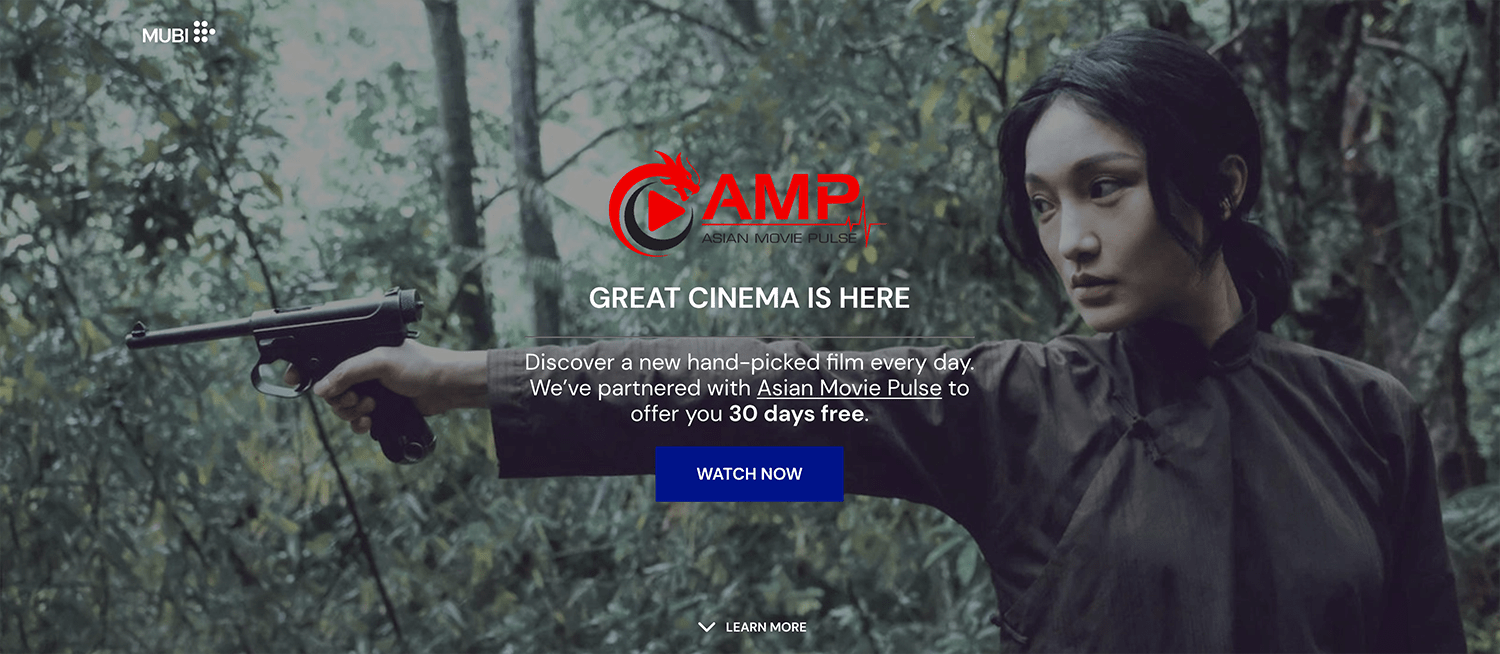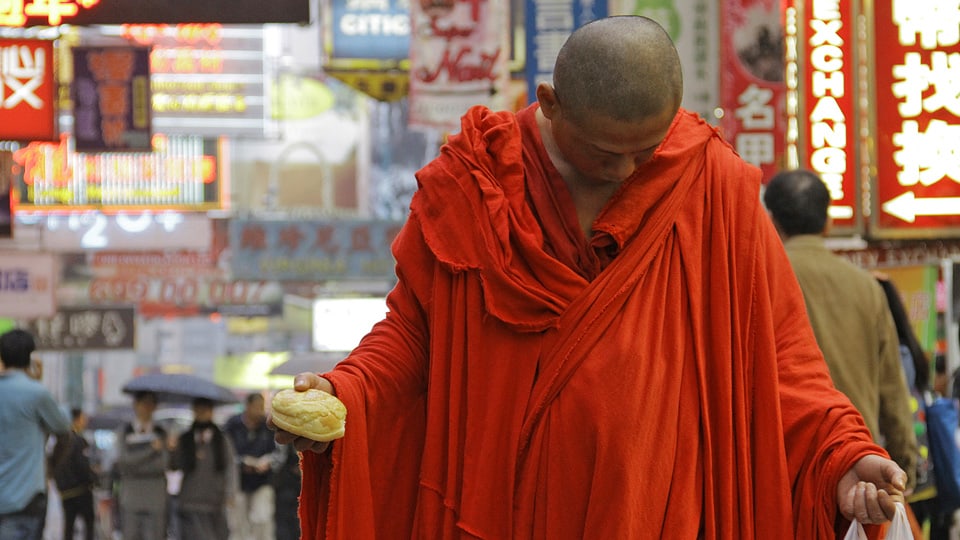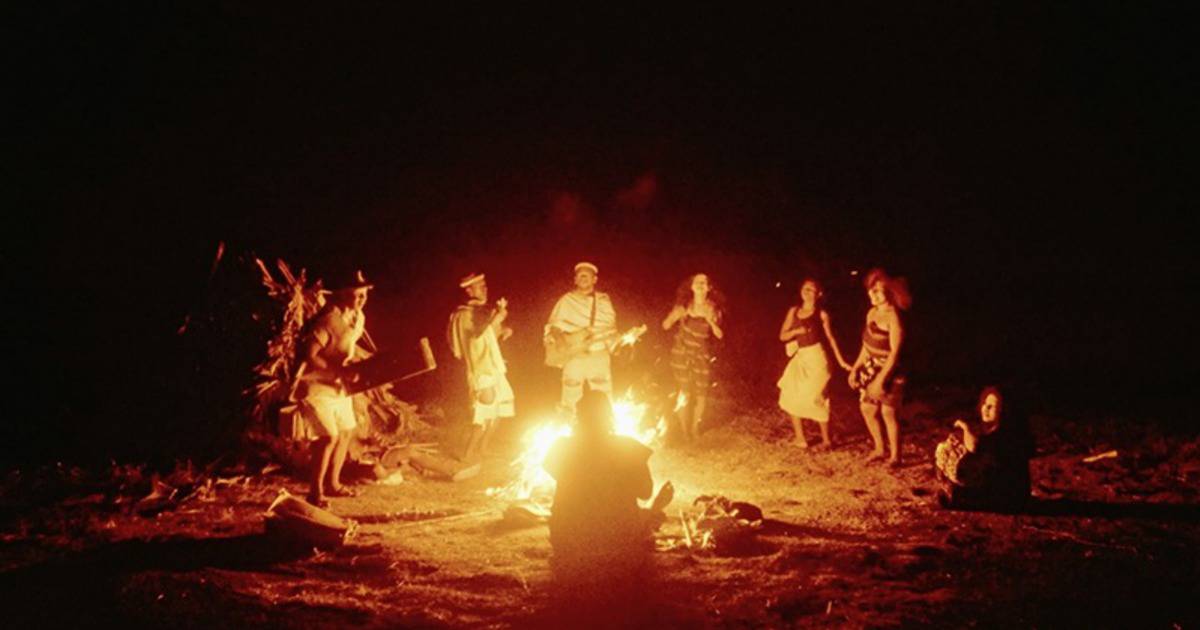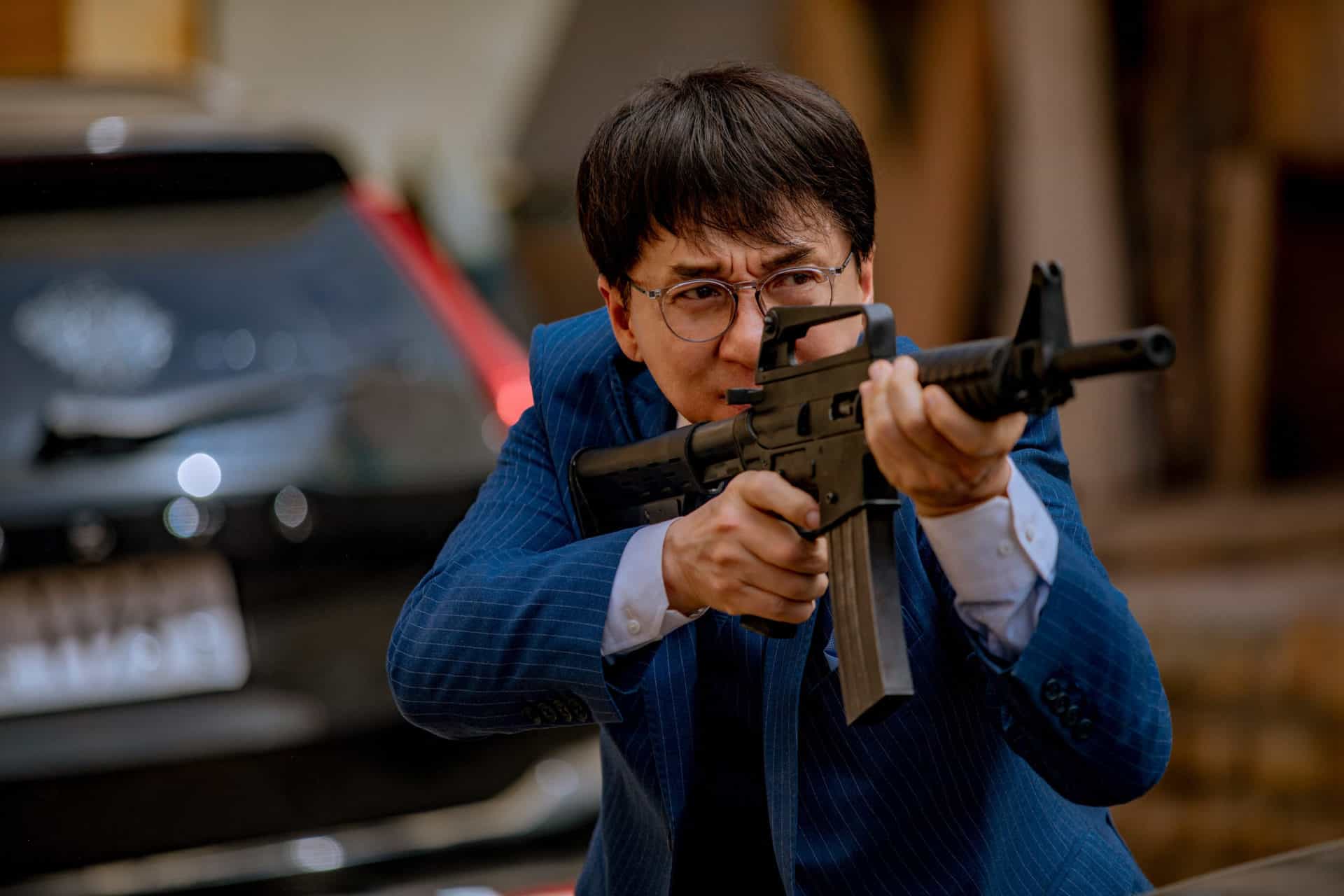In our modern, highly digitalized world the sheer idea of missing out on something or being too slow has become a nightmare for many. It is hardly our fault and for that matter it is not really in our nature to advance in the pace dictated by our surroundings, but with concepts like “fast” and “speed” having become key ingredients in the fields of politics and economy, it was only a question of time, when it was our job (quite literally) to pick up the pace, and God help those who were simply too slow or were left behind. In this context, it is quite telling when a filmmaker such as Tsai Ming-liang picks someone like seventh-century monk Chen Xuanzang as one of his main inspirations for his works, but also in life. One of the works which can be traced back to this particular inspiration is the director's 2012 short “Walker”, in many ways more of an experimental feature because it poses the question of how our modern world would react to a character like Xuanzang as well as the way he perceived the world.
“Walker” is streaming on MUBI
At the core of the feature we find a Buddhist monk (Kang-sheng Lee) carrying a pineapple bun in one hand and a bag of milk tea in the other hand walking the streets of Hong Kong. Unlike the surrounding pedestrians he walks very slowly, as if contemplating each step in advance, which arouses the interest of many bystanders taking pictures or just witnessing what might happen next. We see him in various locations, such as a crowded pedestrian crossing during daytime, but also in the deserted streets at night, walking through bus stations and other areas of the city without looking up and always paying attention to his feet and the pavement underneath him.
In this short feature Tsai Ming-liang again discusses one of the key themes of his body of work, which is the passing of time. Similar to other shorts, for example, “The Skywalk Is Gone”, which was released the same year, “Walker” emphasizes the speed of the modern world, in this case the city of Hong Kong through the use of a rather drastic contrast. The rapid pace of the traffic, the people waking by (if they do not stop to watch the strange event) and the overall urban environment pose the antithesis to the slowness of the monk. Tsai Ming-liang, similar to his other works, again makes a rather simple statement, whose form and overall characteristics are reminiscent of an art installation, but which is nevertheless poignant, perhaps today more so than ever.
Perhaps even more interesting than the aforementioned contrast is the characterization of the monk. While he stays silent throughout the feature, his stoic attitude, his level of concentration and, yet again, his slow pace make him stand out in more than one way and tell us much about his perception of the world. On his way through various locations there is no indication he actually notices what is going around him, much less so the reaction he occasionally provokes, making his actions seem meditative and contemplative, which is highlighted by the static camera shots as well as the editing.

In the end, “Walker” is more of an experimental film or a cinematic contemplation on the nature of time, on how the modern world has forgotten that rapid pace does not necessarily correspond to spiritual or individual fulfillment. While its structure may prove the patience of some viewers, Tsai Ming-liang makes a rather poignant statement about modernity and how technology, economy and globalization dictate how we perceive time and the pace in which we live our lives.
















